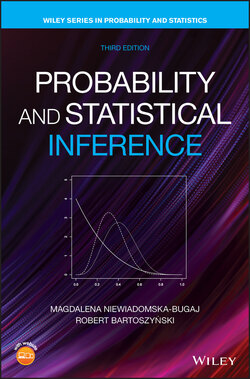Читать книгу Probability and Statistical Inference - Robert Bartoszynski - Страница 21
Example 1.6
ОглавлениеTwo persons enter a cafeteria and sit at a square table, with one chair on each of its sides. Suppose we are interested in the event “they sit at a corner” (as opposed to sitting across from one another). To construct the sample space, we let A and B denote the two persons, and then take as the set of outcomes represented by 12 ideograms in Figure 1.1. One could argue, however, that such a sample space is unnecessarily large. If we are interested only in the event “they sit at a corner,” then there is no need to label the persons as A and B. Accordingly, the sample space may be reduced to the set of six outcomes depicted in Figure 1.2. But even this sample space can be simplified. Indeed, one could use the rotational symmetry of the table and argue that once the first person selects a chair (it does not matter which one), then the sample space consists of just three chairs remaining for the second person (see Figure 1.3).
Figure 1.1 Possible seatings of persons A and B at a square table.
Figure 1.2 Possible seatings of any two persons at a square table.
Figure 1.3 Possible seatings of one person if the place of the other person is fixed.
Sample spaces can be classified according to the number of sample points they contain. Finite sample spaces contain finitely many outcomes, and elements of infinitely countable sample spaces can be arranged into an infinite sequence; other sample spaces are called uncountable.
The next concept to be introduced is that of an event. Intuitively, an event is anything about which we can tell whether or not it has occurred, as soon as we know the outcome of the experiment. This leads to the following definition:
Definition 1.2.2 An event is a subset of the sample space .
